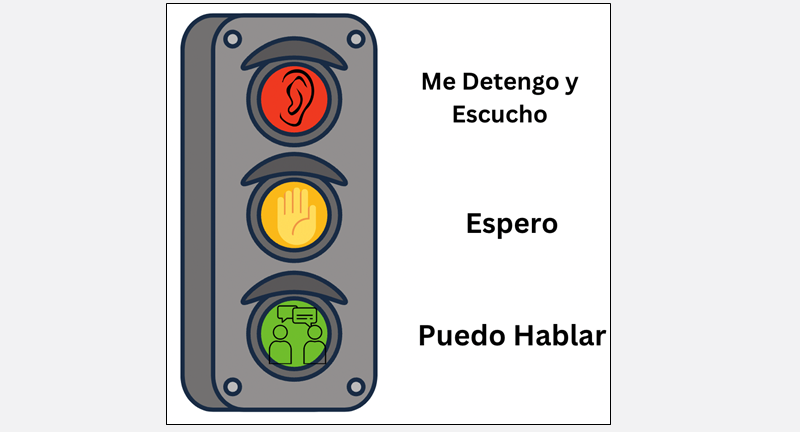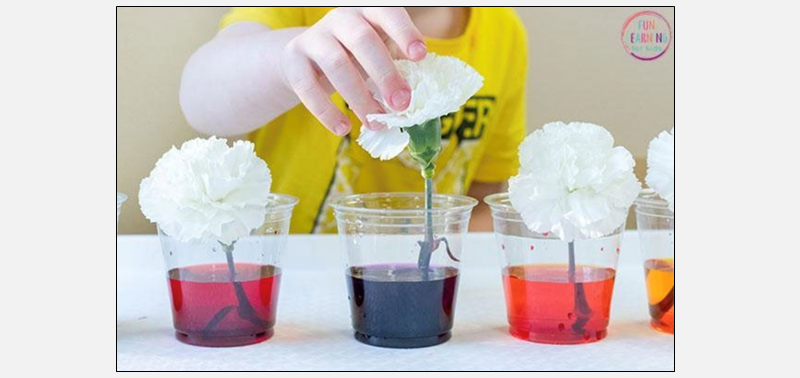Esperar/To wait
WAYS WE CAN USE THE WORD
TO TELL ON SOMEONE e.g. No esperó su turno. (He didn’t wait his turn.)
TO WHINE e.g. No me gusta esperar a las personas que llegan tarde. (I don't like waiting for people who are late.)
REQUEST e.g., Espérame. (Wait for me.)
TO DISCUSS AN INTEREST e.g. No puedo esperar a que el cantante lance el nuevo álbum. (I can’t wait for the singer to release the new album.)
CONJUGATIONS PRESENT AND PAST (PRETÉRITO INDEFINIDO)
|
Subject |
Present |
Past |
|
I |
Espero |
Esperé |
|
You |
Esperas |
Esperaste |
|
He/she/you (formal) |
Espera |
Esperó |
|
We |
Esperamos |
Esperamos |
|
They/you all |
Esperan |
Esperaron |
This activity sheet was adapted into Spanish from the English activity sheet for ‘wait’ created by Beth Kenney @ bkenney@hershey.k12.pa.us. For specific questions or more ideas regarding this core word activity sheet, please contact Sofia Ortiz-Blandon @ fortiz1@mail.sfsu.edu. Thank you!
Snack/mealtimes: Students can make popcorn in a microwave and talk about how they need to wait for it to pop to eat it. Any recipe that requires baking or wait time (e.g., cookies, pudding, etc.) can also be used for this purpose. Adults can talk with students about waiting until the recipe is complete before they can eat it e.g., Tenemos que esperar a que las palomitas terminen de cocinarse (we need to wait for the popcorn to finish popping).
Circle: As the circle time routine takes place, adults can model use of the word wait as they provide instructions e.g., Haz un círculo alrededor del ‘martes’ y luego espera (“Circle Tuesday and then wait.”) ¡Levanta la mano y luego espera a que te llamen! (“Raise your hand and then wait to be called on!”)
Transitions: For any scheduled transitions, adults can ask students if they are ready or if they need to wait a minute to get ready. E.g. ¿Todos están listos para seguir adelante o tenemos que esperar un minuto más? (is everyone ready to move on or do we need to wait another mintue?)
Bathroom: Students can wait their turn to use the toilet and wash their hands when there is a line e.g., Espere su turno para usar el baño y lavarse las manos.
Music time: Ask the students if they have any special requests on the songs that they want to listen to. Ask the children to raise their hand and wait their turns e.g., levante la mano y espere a hablar. Then write down the names of the songs that they want to listen to on a white board to serve as a visual reminder. Explain to the students that they will wait until it is time for the song they chose to be played e.g., Espera hasta que sea tiempo de que se reproduzca la canción que elegiste tocar.

Toys and Games: Students can play a board game such as connect four and wait for their play partner to take their turn before they make their next move. E.g. Vas a esperar que ella tome su turno y luego podrás hacer tu turno. (You will wait for her to take her turn and then you can make your move).
Recess: On the playground the students can wait their turn to go down the slide. Students need to know there cannot be more than one person at the slide at a time to avoid injury. E.g. Espera tu turno en el tobogán. (Wait your turn on the slide).
Here are some suggested books on YouTube that can assist in teaching the core word:
- ¡Esperar no es fácil! por Mo Willems (Waiting is Not Easy a Piggie and Elephant book by Mo Willems).
- In Waiting Is Not Easy!, Piggie has a surprise for Gerald, but he is going to have to wait for it. And Wait. And wait some more... This book has the core word Esperar on almost every page.
- Esperando el Biblioburro/Waiting for the Biblioburro (Spanish-English Bilingual Edition)
- This is a free audiobook read in English and Spanish. It’s the true story of a teacher and librarian who created a mobile library on two donkeys to travel through the mountains and bring books to children in rural Colombia.
- I'll Wait, Mr. Panda - Yo voy a Esperar, Sr.Panda by Steve Anthony.
- This book is read in both English and Spanish and features the core word esperar on almost every page.
Students can request that communication partners wait for them e.g., espérame (wait for me)
When having a conversation with a communication partner the student can be reminded to stop and listen e.g., me detengo y escucho. wait for their communication partner to finish e.g., espero, and then they can speak e.g., puedo hablar.

Sensory Stations: Create different sensory stations for the students and have them rotate after waiting ten minutes in each station. In a plastic bin create a water table with where students can play with rubber duckies, use sponges to wash toy food and plates. In another plastic bin create a sensory bin with uncooked rice, beans or any other dry grains. Insert any toys plastic or rubber toys. Tell the students they will be able to play with all the sensory bins but they have to wait their turn. E.g., Podrás jugar con todos los contenedores, pero tienes que esperar tu turno (you will be able to play with all the sensory bins but you have to wait your turn).
- Bebé Juan Aprende a Esperar con Paciencia 😀✋ | Canciones Infantiles | Little Angel Español (Baby Juan Learns to Wait with Patience).
- Sé esperar mi turno - Miss Rosi (I know how to wait my turn)
- CoComelon en Español | Espera tu turno | Canciones Infantiles y de Cuna (Wait your turn)
- Phineas and Ferb - Watching and Waiting/Esperando y Mirando (Latin American Spanish) [HQ]
Bingo: Adults and students can play bingo together. Create a bingo board of times where we wait, we wait for the airplane to take off, wait in line to go shopping, we wait in line to get our food, we wait for the cake to bake, wait to go to the restroom, wait to see your family, wait for your birthday other holidays. The following link creates free bingo game cards easy to use for parents & educators.
First and Later Boards: Adults can create “First and Later Boards.” These cards transform waiting time into a sequence of what needs to happen to access the reward or activity they want. Use visual elements to make abstract ideas more concrete.

Art activities: Students can use watercolors or any other sort of paint to make their own masterpiece, then set it somewhere safe to wait for it to dry. Teachers can say to the students “Ahora vamos a esperar que la pintura se seque” (now we will wait for the paint to dry).
Science activities: Students can plant seeds in dirt, take care of their plant, then wait for it to sprout and grow. Teachers can tell their students “Plantaremos las flores y esperaremos a que florezcan” (we will plant the flowers and wait for them to blossom).
Students can complete a science experiment where they add food coloring to water in order to dye cut flowers. They can wait to see what happens in an hour and in a day. Experiment courtesy of Fun LearningFor Kids.

Caterpillars: Adults can go out into the garden with the students and look for caterpillars. If you find them you can bring them into the classroom, put them into a butterfly habitat, and wait for them to build a cocoon. Tell the students that they have to wait approximately 4 weeks for the cocoons to turn into butterflies e.g., Tenemos que esperar 4 semanas para que los capullos se conviertan en mariposas.

Visual Countdown Timer: this app is available in English and Spanish. The developer created this app to reward and motivate their child to do things quickly but can also be used as a visual representation of time elapsing while waiting.
WORD WALL: Create a Word Wall and add ‘esperar’ to the list.
READING and the Word Wall: Sound out the letters together. Have the students find the word on the AAC system.
WRITING and the Word Wall: Using a pencil or alternative pencil, have students try to type the word on the keyboard or write the word together.